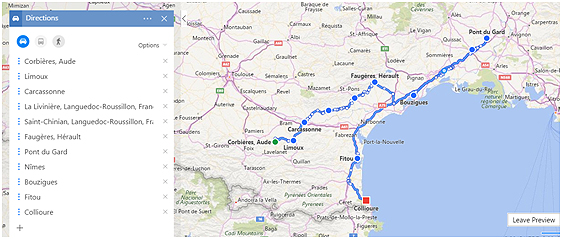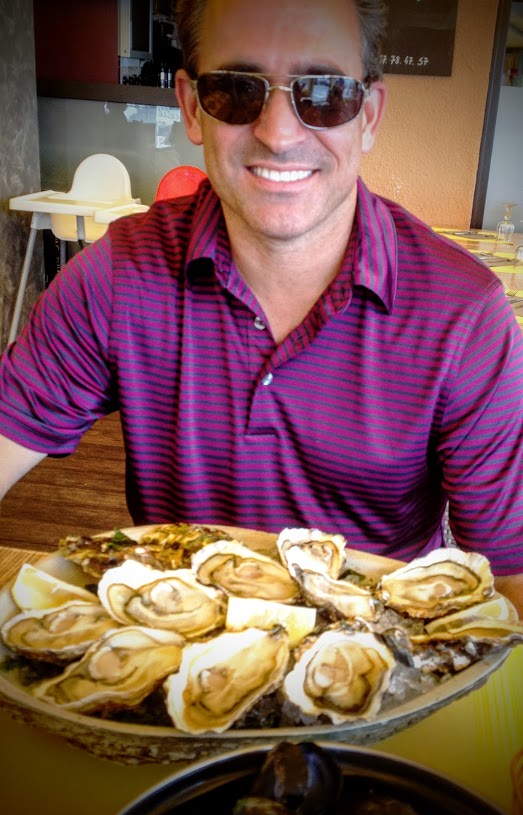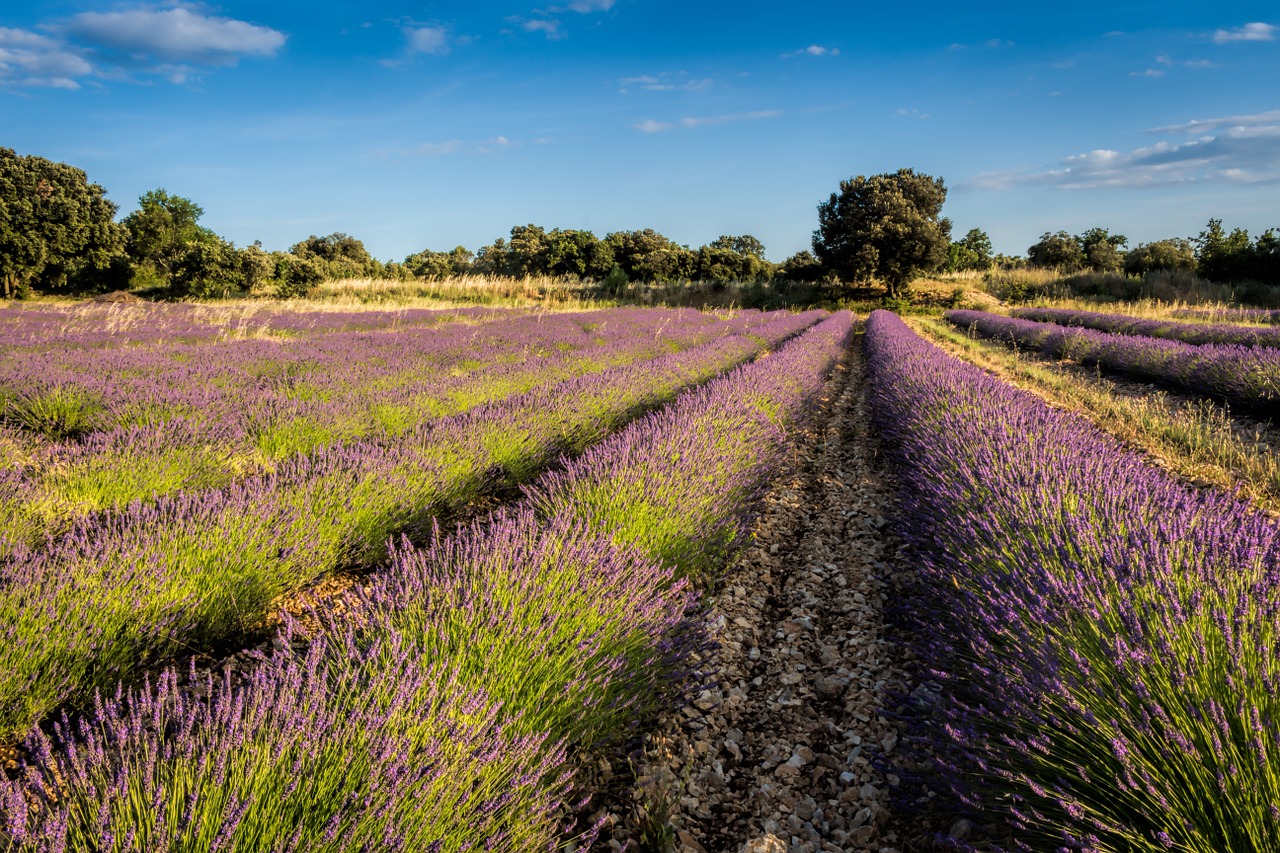
History / Background
Pronounced lang-uh-doc/ roo-see-yawn, this region of France stretches from *near* the Rhone River’s ‘west-SIDE’, along France’s southwestern coast all the way to Spain’s border—also called the “Midi”, (for Mid-Pyrénées range in SW).

It contains a yin-yang combo of spirited French rebels:
Languedoc = These northerners parlez le langue d’Oc, or “language of Oc”, (Oc meaning “yes” in old Occidental dialect, instead of langue d’Oui, as in the rest of France—read more here.)
Roussillon = Given their druthers, these French (& Spanish) Catalan-speaking-loyalists would prefer to leave their Motherlands and create a Catalan-Nirvana, together. (Picasso would approve.)

Lay of the Land
Enjoy really, really old history? Then you’re going to love the pre-homo sapien & early Man sites; Greek vineyard lore dating to 500 BC; 1st century AD Roman aqueducts and coliseums; and Goths: warriors who booted the Romans and later influenced Medieval castle rehabs and cathedral designs galore.
Even just spectacular scenery is a draw. Unfortunately, jaw-dropping cliffside views accompany some of the most economically-depressed areas of the country, too. (Holster your corkscrew for potential run-ins with delinquents roughin’ up the ruins…)
Type A’s beware! Pre-planning has its challenges. Fortunately, a little goes a long way:
- Resources intermingle a confusing mish-mosh of references to Departments (counties), Communes & Villages (née towns), AOCs, Coteaux du & Côtes…etc (appellations) and actual destinations inside them⇁so this primer should help shave off eight hours of research.
- Most producers are super-small and aggregated by village Cooperatives. Large wineries need to be sought out. Research your favorite styles for recommended Chateaux in advance.
- Add on must-see ancient sites, then prepare to navigate the 700* roundabouts (and tunnels) required to get to them. Yeah, these here parts are nothing short of an adventure.
(*Writer’s embellishment.)
- Note: Camping is also big, if that’s your thing. Some towns (Beziers) have seen better days and should be avoided altogether.
Grapes & Wine Styles
My husband calls this area “the land of ruins, rosés and wrong turns” (his original creation at time of this writing.) The largest wine-producing area of France by far, not everything is rosé by any means. SO, just for IWA, I’ve created an original table: What to Expect. (BTW, Mediterranean food pairs extremely well with any and all):
| MAIN GRAPES USED IN ALMOST ALL WINE FROM HERE (Primarily the first four varietals; the others increasingly appearing.)All Reds will also appear in Rosés. |
Grenache. W+R. Older vines = more concentrated/ better aging potential. Flavor influences: raspberries and ground pepper. Mourvèdre/ Monastrell. R. Full, dark and spicy wines; or lends backbone to lighter fruit-forward styles. Muscular, herb-y. Carignan R. Add astringency. Old vines better/ rounder/ mellower and add aging potential. (FITOU is a village famous for reds with softer acidity and tannins based on low-yield Carignan plantings.) Syrah. R. Rhône’s beloved grape carries over. Cinsault. R. Heat-tolerant workhorse in inexpensive table wines. Berries or ‘red’ fruits (cherries, plums, etc) on the nose. Chardonnay W. In Vin du Pays d’Oc & sparklings Roussanne W. Adds herb and flower-scented notes as well as peach & pear. Consume in first 3 yrs or after 10+ for best results. |
| VIN DU PAYS “Wines of the Countryside” Make up 80% of France’s supply. |
Best grapes = A.O.C., a rare French instance when grape varietals are allowed on the label. However, still blends using same grapes from all over that region (not single-vineyards); and not just one type of grape: minimum quantities of specific grapes are allowed in each AOC. (See Limoux example below.)AOC REDS = See Top/ Might also include Cabernet Sauvignon, Cabernet France, or MerlotAOC WHITES = See Top/ Might also include Sauvignon Blanc or ViognierAOC ROSÉS*All non-A.O.C-designated VINS DU PAYS are blends.* |
| VIN ORDINAIRE | Average, every-day drinking wines. Range from plonk to decent. |
| VIN DU NATURELS | Dessert wines: semi-fermented and fortified with brandy.1) MUSCATS. W. 1 of 2 alternate muscat grapes used, depending.2) BANYULS. R. Based on 50%+ Grenache (“Port-ish” – but not.) |
| LIMOUX SPARKLING WINES | From Limoux Village, both WHITE: CREMANT Mauzac grapes must constitute a minimum of 90% of the wine, plus Chardonnay and Chenin Blanc. BLANQUETTE This is the very first sparkling wine France ever produced! Mauzac grape, but rules have relaxed. In fact, Dom Perignon-of Champagne fame-served at this Abbey prior to his more-famous experiments with bubbly in the more-famous location. (You’re welcome, Champagne!) AOC Side Note/ Example:A Limoux AOC-labeled RED must be composed of:at least 50% Merlot…and at least 30% of: [Carignan (limited to a maximum of 10%) + Grenache, Syrah, & Malbec-known locally as Côt]… and a maximum of 20% Cabernet Sauvignon & Cabernet Franc. Note: Cab & Cab Franc are also used in the Vin de Pays wines sold as Vin de Pays de la Haute Vallée de l’Aude. (Aude is their river.)Easy, right? Only 100 more to remember…Table – ©Lori Stevens, All Rights Reserved |
Navigation
We hit what to drink; now, where…
A picture is worth a thousand words. This was our actual driving route. Snippets follow:

Corbières – Area includes 11 appellations, featuring mostly reds and 50% based on Carignan.

Dan eating oysters and mussels in Bouzigue
Limoux – Fête las Fécos: Annual carnival January-April, every weekend over three months. Other recos:
- Sieur d’Arques – Sparkling & stills. Great background on both signature bubbly styles.
- Maison Guinot – Winery tours cater to visitors. Overall great blanquette tastings.
- l’Atelier des Vignerons – Amazing local wine shop to stock up. Informative!
Carcassone – Ancient fortress-walled town. Pretty when lit up at night (just like us.)
Minervois (La Livinière) Plenty Vin Ordinaire & Vin du Pays, but small AOC single-estate medium-bodied fruit-forward Reds found here. Beware ‘happy mouth’ syndrome.
Saint Chinian – AOC are Reds & Roses only. Grenache-Mourvedre-Syrah weightier than Minervois’.
Faugères – Ancient windmills + ruins in hills. Two Cooperatives + 44 wineries make R&W AOCs.
Pont du Gard Aqueduct/ bridge built by Romans 1st AD.
Nîmes – OK – some folks argue city recently re-districted to Rhone AOC, but regardless, GREAT place! They really like their salt cod brandade by the way… Roman ruins from Year One. (See Photos!)
Bouzigues – Seaside village. Most famous in country for mussels. (See Photo of friend Dan.)
Fitou – Yummy Carignans. VERY yummy. Stop en route: better drinking than staying. Just sayin’…
Collioure – Seaside village more Spanish than French. Who cares! It is charming and had a spectacular sunset (or was it sunrise?)… Regardless, the sky matched the rosés we were drinking…

More Resources
Fantastic overview of the five Languedoc-Roussillon Departments
Most comprehensive list of appellations in an easy rollover/ pop-up format. (Plan tastings!)
*Shout out/ thanks to friends Lisa & Dan Gemme for sharing their own L-R photos!*
Sante!
Lori Stevens, former wine magazine food editor has worked for wineries and traveled extensively through most of the world’s wine, craft beer, cider, and scotch-producing regions. Author of Wine: A No Snob Guide: Drink Outside the Box, Berkeley: Rockridge Press, 2015; she currently lives in Seattle.
